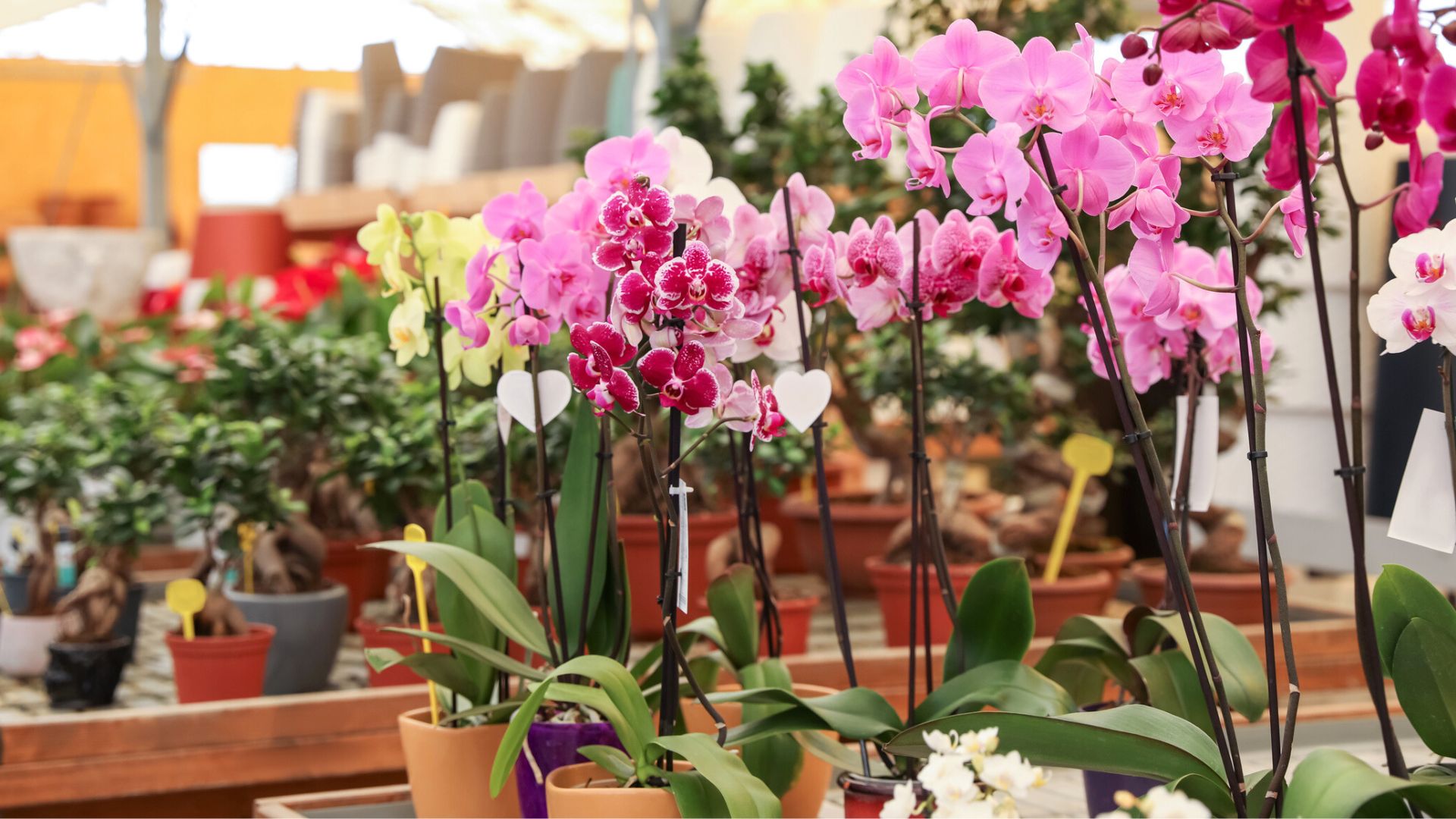What to Do with Your Orchid after Bringing it Home from the Store


Orchids are exotic and beautiful. They add a certain sophistication and elegance to any home, but the idea of caring for an orchid may be intimidating if you're unfamiliar with their needs. What orchid growers want you to know is that it's really not that difficult. As long as you can provide the right environment for your orchid, it should thrive. Here are some pointers from the experts on how to care for that new orchid you just bought.
Choose the Right Container
Orchids don't naturally grow in pots, so selecting one that will provide the most natural environment is important. Epiphytes like orchids grow on tree branches, and their roots remain exposed to absorb moisture and nutrients from the air and decaying organic matter. So, a pot can feel a bit confining for an orchid.
For these reasons, a great choice for a container for your new orchid is one made of clear or translucent plastic. This allows light to get to the roots, and it allows you to see the roots to be sure they are healthy and getting adequate moisture. Orchids do best with smaller pots, so select one that fits the roots but leaves little extra space.
Don't Use Soil
Orchids don't grow in soil. It's not natural for their roots. What they need instead is a potting mix that allows for air circulation and water drainage. Any medium mix especially made for orchids is better than soil, but you can further subdivide these. Orchid mix varies depending on the type of orchid and the size of roots.
To choose the right mix, know what type of orchid you have. Or, to be more specific, look at the roots. Different types of mix are designed to provide the best water retention and drainage, and airflow for small roots, big roots, fat roots, or thin roots.
Gardening tips, videos, info and more delivered right to your inbox!
Sign up for the Gardening Know How newsletter today and receive a free copy of our e-book "How to Grow Delicious Tomatoes".
The most common type of orchid is the Phalaenopsis, or moth orchid. It is a thick rooted orchid that grows well in both bark and sphagnum moss. When repotting, be sure to check which type of mix yours is currently potted in. If it is potted in bark, this mix will be perfect. If it is potted in moss, this one will be perfect. The difference between them is water retention. Moss based mixes will hold more water and require less frequent watering than bark.
Fertilizer, Water, and Light
Regular, orchid-specific fertilizer is essential for health and growth. Don't settle for general fertilizer; it must be made for orchids. The best orchid fertilizer is the MSU blend, an orchid food that was designed based on a Michigan State University study of orchid care. Combined with Quantum Orchid, this combo is sure to bring success. For the best results, fertilize once a week and flush with just water - no fertilizer - once a month.
The amount of light your orchid needs depends on the type, but orchids generally require indirect light. An east- or west-facing window is best. Watering is one of the trickiest aspects of orchid care, as the needs vary by type. However, all orchids do best when the roots are soaked liberally during a watering. Bring the pot right to the sink and let water flush through the roots several times. Watering frequency can range from every few days to less than once a week.
Repot Your Orchid Right Away
What most people are surprised to learn about orchids is how often they need to be repotted. In fact, the orchid you bought at the store has probably already been in its current potting mix too long. Plan to repot it with new mix as soon as it goes out of bloom and to do so again every six months to three years. Orchid potting mix breaks down over time and gets denser, smothering roots. This is why repotting is so important.
Orchid care is not nearly as difficult as you may have thought, so go ahead and buy that pretty, exotic epiphyte. Maybe start with one, see how you do, and then start growing your indoor orchid garden.

Mary Ellen Ellis has been gardening for over 20 years. With degrees in Chemistry and Biology, Mary Ellen's specialties are flowers, native plants, and herbs.
-
 8 Perfect Flowers To Plant With Tomatoes To Boost Yields & Banish Pests
8 Perfect Flowers To Plant With Tomatoes To Boost Yields & Banish PestsDon’t forget flowers when choosing companion plants for your tomato beds or pots. These pretty, fragrant blooms add beauty but are also highly beneficial.
By Mary Ellen Ellis
-
 Want The Longest Lasting Hydrangea Flowers? Grow These 8 Panicle Hydrangea Varieties
Want The Longest Lasting Hydrangea Flowers? Grow These 8 Panicle Hydrangea VarietiesFor ornamental shrubs that deliver the longest flowering seasons with plush blooms and delicate hues, these panicle hydrangea varieties are essential in your yard
By Tonya Barnett